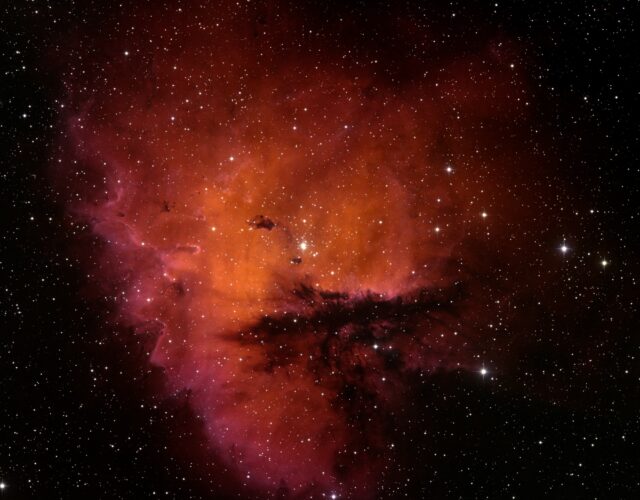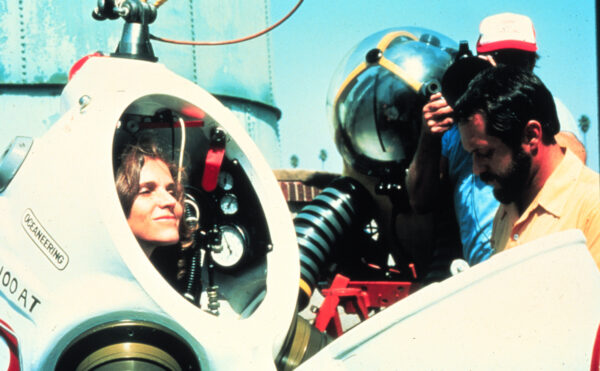Most scientific disciplines address the kind of big questions that stir and excite people. Physics wows us with the origin of the universe, while biology delves into the evolution of human beings—two fundamental mysteries of existence. But chemistry still needs a big question to “own.” A speaker I heard at the American Chemical Society meeting last March suggested a humdinger: how did rocks, gas, slime, and other dead matter ever transform into living beings? How did life arise from nonlife?
Surprisingly, while Earth’s terrestrial chemistry obviously shaped life here, the real genesis of life may reside in the black void of outer space. Comets bombarding the early Earth probably filled our oceans with all-important water. Even more important, comets, meteors, and asteroids might well have seeded our planet with the molecules needed to kick-start life. It takes some imagination to see how molecules in space could become fully living creatures on Earth, but recent chemical work has forged plausible links for each step in the progression.
Chemists have extracted all sorts of stray organic molecules, including DNA bases and amino acids nearly identical to those in living creatures, from carbon-rich meteorites that have landed on Earth. Skeptics argue that these molecules came from earthly microbes, which could have infiltrated the meteorites after they crash-landed. But at a meteorite recovery site in Antarctica the surrounding ice betrayed no trace of bacteria or free biomolecules, making contamination unlikely. Instead, space chemists argue that sunlight energy must have fused some of the smaller organic molecules commonly found on the surface of meteors into more complex organics. (My favorite example of this is the DNA base adenine, which can be formed by squishing five HCN molecules—cyanide, of all things—into a double ring.) As another strike against the contamination theory, the meteorite biomolecules contained a high proportion of deuterium (heavy hydrogen) and carbon-13, both signatures of space-based reactions. Earth-based life usually employs regular hydrogen and carbon.
Another reason to doubt contamination is the pattern of “handedness” of the meteorite biomolecules. Just like humans’ hands, many molecules come in right-handed and left-handed flavors that cannot be superimposed onto each other. Animate beings (i.e., living things) and inanimate things approach handed molecules differently: nonliving chemical processes produce equal numbers of lefties and righties, while life usually works with molecules of one hand or the other. (Our amino acids are lefties, for example.) Meteorites contain more lefty amino acids than righties, but not many more. The meteorites therefore sit strangely, excitingly, between life and nonlife.
So how could dead matter manufacture more lefties or righties? Many space chemists flip the question around and look for processes that could selectively destroy one of the hands. One potential culprit is high-energy polarized light, which preferentially degrades right-handed amino acids in the lab. Our atmosphere, however, blocks out any possible high-energy polarized light that might exist in space, making it hard to determine how much exposure a carbon-rich meteorite might get. But astronomers have detected low-energy polarized light from stars, and some suggest that neutron stars or dwarf magnetic stars could easily produce the high-energy stuff.
At this point in the story the molecule-rich meteorites land on Earth, and the story of life from nonlife shifts beachside. That’s because while starlight might produce the modest excess of lefties or righties found on meteorites, true life needs an immodest excess of one hand. How could that happen? Perhaps through seawater. In certain molecules (e.g., fragments of RNA, which probably predated DNA) a left-handed form and a right-handed form often pair up and create crystals. The key point is that those crystals don’t dissolve in water as well as lone righty or lefty forms do. So after all the righties and lefties pair up in crystals, any excess molecules of one hand—like the meteor’s excess—would then dissolve and become concentrated in seawater, where they could interact and build on each other, like in living creatures. It’s still a doozy of a step from concentrated lefty or righty molecules to jumping, swimming, flying, fighting creatures—but it’s a darn good start.
Big thinkers have linked life and space before. Astronomer Carl Sagan famously said, “We are all star stuff”: all the chemical elements in our bodies come from stars that burst and seeded the galaxy. Another astronomer, Fred Hoyle, promoted the idea of panspermia: that hardy microbes hitchhiked to Earth on comets and all known life today descended from them. The scenario outlined here differs from Sagan’s or Hoyle’s vision in an important way, though, because it’s intermediate between them. Sagan was talking physics—where elements come from. Hoyle was talking biology—how life possibly arrived and evolved on Earth, not where it originated. But the outline above fits snugly between the two: it’s chemistry, and it’s in that niche that we’ll probably find the answer to the biggest of the big questions out there.




